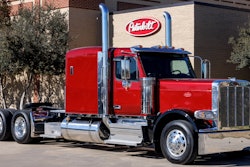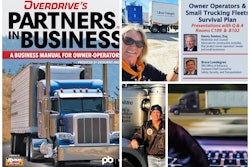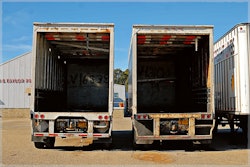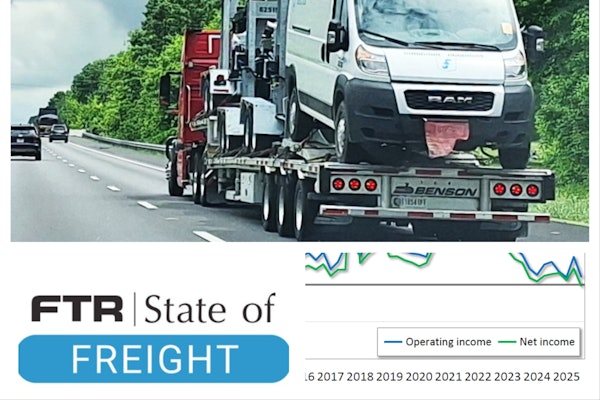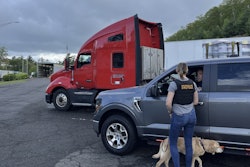
Roadcheck is coming. Be prepared.
Get YOUR Roadcheck inspection questions answered in this Q&A session — sponsored by Bestpass — with CVSA Roadside Inspection Specialist Jeremy Disbrow on THIS WEDNESDAY at 2 p.m. Eastern.
The Commercial Vehicle Safety Alliance has updated the out-of-service criteria for 2024 with 11 new conditions ranging from small paperwork items to new quirks in the 20% rule for brake violations. The new conditions will take effect on April 1.
We caught up with Kerri Wirachowsky, CVSA's director of inspection programs, to get a detailed breakdown of the new rules and an inside look at the debates between industry, regulators, and enforcement that shape how the annually published OOS guides the industry and promotes uniformity in compliance and enforcement throughout North America.
Starting with the "meat and potatoes" of the new rules, Wirachowsky pointed to new language around camshaft bushings in brake systems.
This resulted from "several situations during inspections where a missing bushing was discovered," she said.
[Related: CVSA's new out-of-service criteria available in app]
According to Wirachowsky, "90% of the time" if the camshaft bushings are bad enough, that will manifest itself in some type of braking defect that the existing OOS criteria already cover, but not always.
 Missing camshaft bushings now are part of the 20% rule for an OOS brakes condition.CVSA
Missing camshaft bushings now are part of the 20% rule for an OOS brakes condition.CVSA
"There were at least two incidents where the camshaft bushing were gone altogether, but due to how the camshaft jammed into the spider casting, the brakes weren't really working but weren't actually out of adjustment," she said.

Now, language has been added into the OOS criteria specific to worn camshaft bushings, which is not a violation, but missing camshaft bushings are included in the 20% criterion, and counts as one defective brake.
The confusing section on the 20% criterion also got a small update, simply adding a watermark to all the pages on the 20% rule so readers don't get confused between what falls under that rule and what are just general brake regulations.
[Related: Roadcheck 2024: Inspectors looking for drugs, alcohol, and steady gladhands]
The next meaty item again came from a "bizarre" happening on the road, she said.
"We had a truck turn up at the scales, and I can’t believe the truck was still together," Wirachowsky said. In fact, it was a semi pulling doubles, and the second trailer appeared to be connected by little more than hope and prayer. "The pintle hook on the back of the truck was there," she said, but instead of the trailer properly coupled to the tractor, it was somehow "jammed underneath the bumper of the truck."
 Hauling doubles on a wing and a prayer.CVSA
Hauling doubles on a wing and a prayer.CVSA
There simply was "nothing in OOS criteria to deal with a vehicle that’s not coupled to a coupling device at all," she said.
An "edit was made to the section to include the latch not secured or not in use," she said.
This led to a further conversation about trailer balls and mismatched hitches, and a further condition that if the trailer ball is marked with its size and coupled with the wrong hitch, that's a violation. Worn out trailer balls that don't display the size won't get caught up in this.
Moving on, there was perhaps a lucky break in the forgetful truck operator's favor: If your lights aren't on at night, but they work, that's no longer an OOS violation, though it's still a violation of state laws to drive in the dark without lights.
Wirachowsky said after a 3-hour debate, ultimately CVSA decided that because the inspector hadn't started the inspection yet when the truck was observed without lights, and that the lights do work when inspected, it's not an OOS violation.
[Related: Brakes: Top Roadcheck OOS violation]
Another lighting-related issue that gives truck operators a break is that "violations for lamps such as color, height or position, should be documented as violations, but are not considered OOS unless they are inoperative."
Wirachowsky said that often, dump-style trucks have lots of falling rocks around them during loading and unloading and sometimes the operators want to put the lights out of harms way, but that can stray from the strict regs around light placement.
More common-sense work around auto-inflation systems for tires found that if a tire has a leak in the tread area, although it's "always a violation," according to Wirachowsky, it won't be an OOS violation unless it loses pressure.
If the tire is auto-inflated and holding pressure, that's just a normal violation, not OOS. If the leak gets worse and the system can't keep it pumped up to within 50% of the max air pressure for the tire, that does become an OOS violation.
Otherwise, keep an eye out for more focus on Drug and Alcohol Clearinghouse checks and tractor protection controls in the air system, the focus of this year's Roadcheck.
Just like how inspectors now have increased access to checking DACH records, they'll be making sure that hazmat-endorsed drivers keep current with their TSA screenings in states where CDLs last more than five years.
[Related: Trucker's horror story with CBD, FMCSA's 'Return to Duty' and SAP program]




